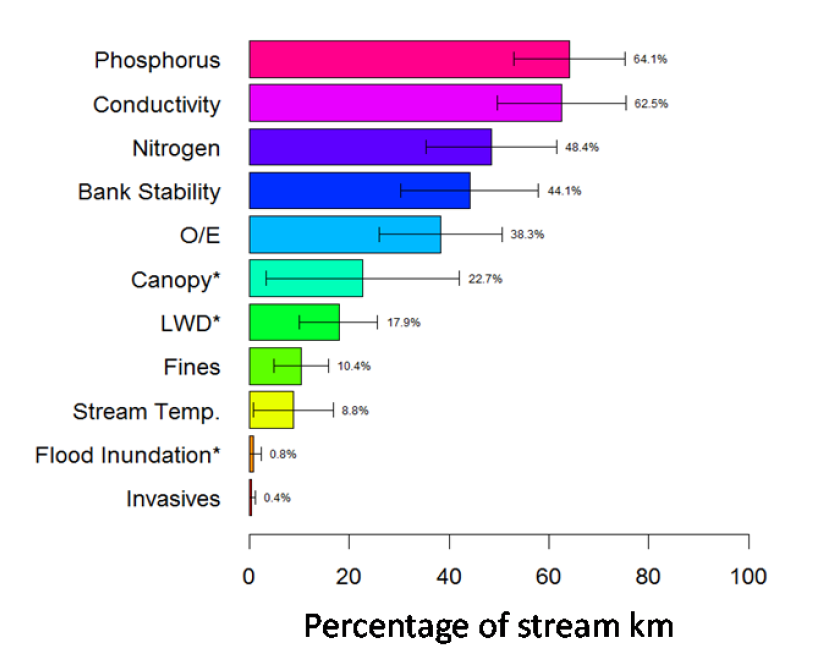To provide more consistent, quantitative information regarding the condition of Utah BLM aquatic resources, the Fisheries, Riparian, and Soil, Water, and Air programs worked collaboratively to implement AIM in accordance with the BLM’s National Aquatic Monitoring Framework. The information generated from this study fills an important information gap in meeting monitoring requirements set out by FLPMA and the Clean Water Act. The objectives of this assessment were to:
- Determine whether Utah Aquatic Land Health Standards (LHS) (e.g., Water quality, Geomorphic processes, Aquatic biodiversity, Riparian processes) were attained at the State and District scales;
- Identify and rank the stressors contributing to degraded conditions, if standards are not attained;
- Prioritize indicators and geographic areas for more intensive monitoring and determine the causes for failing to meet LHS;
- Inform the development of the BLM’s AIM-National Aquatic Monitoring Strategy
The results of this assessment show that only 36% of the length of Utah BLM wadeable streams had minimal departure from reference conditions across all indicators. Of the four Utah BLM districts, streams in the West Desert appear to be in the best condition, with 60% of streams having minimal departure from reference. The Green River District, and to a lesser extent the Canyon Country District, present the most concerns, with more than 70% of the length of streams estimated to significantly depart from reference conditions for at least one indicator. However, results from the Canyon Country District should be interpreted with extreme caution because of low sample size relative to the other districts.

The most pervasive stressors observed in rivers and streams across the state were those related to water quality; specifically, elevated levels of total phosphorous, total nitrogen, and salinity (see Figure 2). Excess phosphorous was observed in 64% of stream km and excess salinity was observed in 63% of stream km.
Because the potential water quality issues were identified based on one-time grab samples, the UT BLM partnered with the UT Department of Water Quality to determine if the observed water quality exceedances are pervasive over time.
Despite the potential issues observed with water quality, some data indicated that Utah BLM streams and rivers are in relatively good condition. For example, more than 60% of stream kilometers displayed minimal biological departure from reference conditions, as indicated by aquatic macroinvertebrate assemblages. Riparian and stream channel indicators also generally scored well with no pervasive concerns except for lower than expected stream bank stability and isolated occurrences of low canopy cover and large woody debris in the stream channel.
These results indicate have helped the UT BLM to understand that throughout the state, riparian conditions are better than in-stream conditions, and that management actions that will improve in-stream conditions and water quality should be prioritized. To view the final report for this AIM project click here.